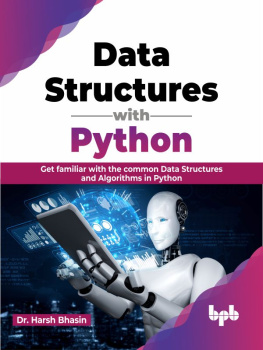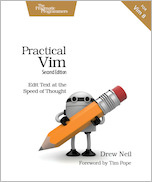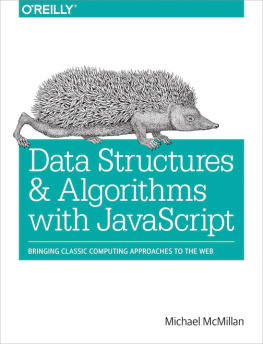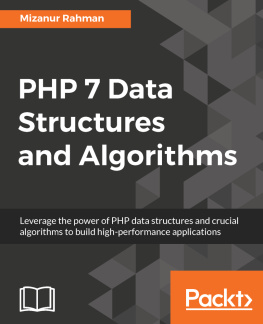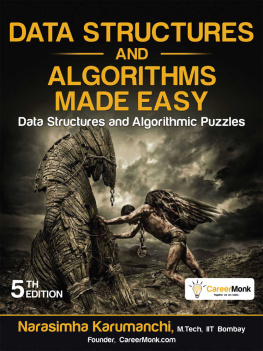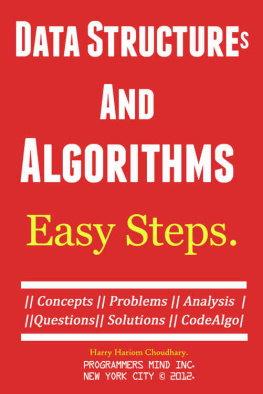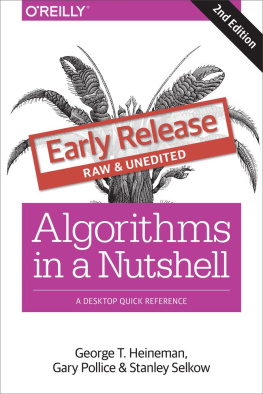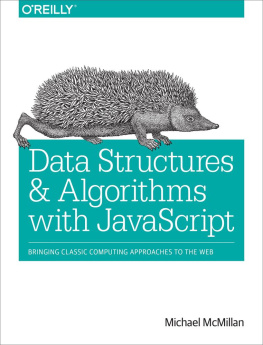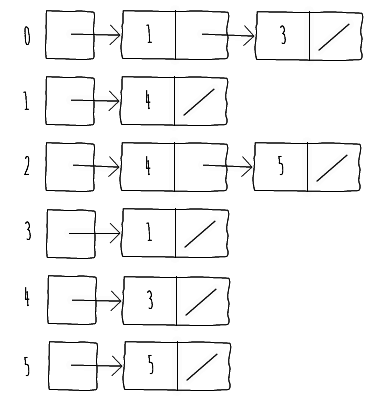James Cutajar [James Cutajar] - Beginning Java Data Structures and Algorithms
Here you can read online James Cutajar [James Cutajar] - Beginning Java Data Structures and Algorithms full text of the book (entire story) in english for free. Download pdf and epub, get meaning, cover and reviews about this ebook. year: 2018, publisher: Packt Publishing, genre: Home and family. Description of the work, (preface) as well as reviews are available. Best literature library LitArk.com created for fans of good reading and offers a wide selection of genres:
Romance novel
Science fiction
Adventure
Detective
Science
History
Home and family
Prose
Art
Politics
Computer
Non-fiction
Religion
Business
Children
Humor
Choose a favorite category and find really read worthwhile books. Enjoy immersion in the world of imagination, feel the emotions of the characters or learn something new for yourself, make an fascinating discovery.
- Book:Beginning Java Data Structures and Algorithms
- Author:
- Publisher:Packt Publishing
- Genre:
- Year:2018
- Rating:5 / 5
- Favourites:Add to favourites
- Your mark:
Beginning Java Data Structures and Algorithms: summary, description and annotation
We offer to read an annotation, description, summary or preface (depends on what the author of the book "Beginning Java Data Structures and Algorithms" wrote himself). If you haven't found the necessary information about the book — write in the comments, we will try to find it.
Though your application serves its purpose, it might not be a high performer. Learn techniques to accurately predict code efficiency, easily dismiss inefficient solutions, and improve the performance of your application.
Key Features- Explains in detail different algorithms and data structures with sample problems and Java implementations where appropriate
- Includes interesting tips and tricks that enable you to efficiently use algorithms and data structures
- Covers over 20 topics using 15 practical activities and exercises
Learning about data structures and algorithms gives you a better insight on how to solve common programming problems. Most of the problems faced everyday by programmers have been solved, tried, and tested. By knowing how these solutions work, you can ensure that you choose the right tool when you face these problems.
This book teaches you tools that you can use to build efficient applications. It starts with an introduction to algorithms and big O notation, later explains bubble, merge, quicksort, and other popular programming patterns. Youll also learn about data structures such as binary trees, hash tables, and graphs. The book progresses to advanced concepts, such as algorithm design paradigms and graph theory. By the end of the book, you will know how to correctly implement common algorithms and data structures within your applications.
What you will learn- Understand some of the fundamental concepts behind key algorithms
- Express space and time complexities using Big O notation.
- Correctly implement classic sorting algorithms such as merge and quicksort
- Correctly implement basic and complex data structures
- Learn about different algorithm design paradigms, such as greedy, divide and conquer, and dynamic programming
- Apply powerful string matching techniques and optimize your application logic
- Master graph representations and learn about different graph algorithms
If you want to better understand common data structures and algorithms by following code examples in Java and improve your application efficiency, then this is the book for you. It helps to have basic knowledge of Java, mathematics and object-oriented programming techniques.
Downloading the example code for this book You can download the example code files for all Packt books you have purchased from your account at http://www.PacktPub.com. If you purchased this book elsewhere, you can visit http://www.PacktPub.com/support and register to have the files e-mailed directly to you.
James Cutajar [James Cutajar]: author's other books
Who wrote Beginning Java Data Structures and Algorithms? Find out the surname, the name of the author of the book and a list of all author's works by series.

![James Cutajar [James Cutajar] Beginning Java Data Structures and Algorithms](/uploads/posts/book/119335/thumbs/james-cutajar-james-cutajar-beginning-java-data.jpg)
